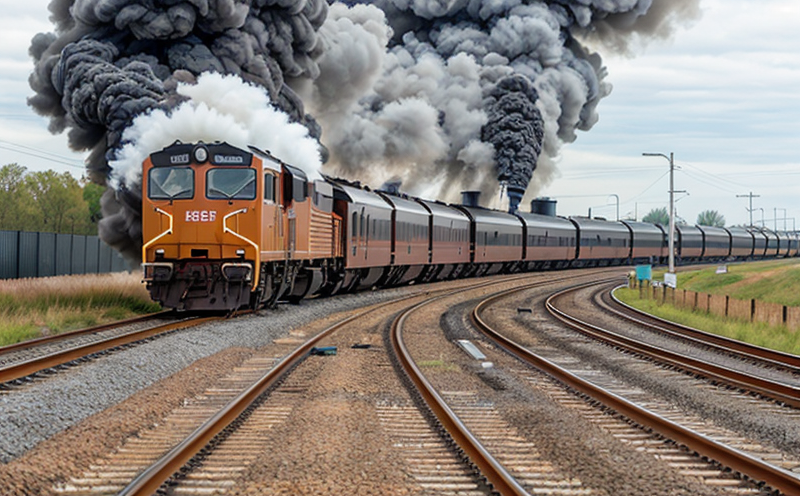Coating Resistance to Chemical Damage in Rail Environments
Coating Resistance to Chemical Damage in Rail Environments Protecting Your Assets with Eurolabs Expertise
In the fast-paced and demanding world of rail transportation, maintaining the integrity and safety of coatings is crucial for preventing chemical damage and ensuring the longevity of assets. Coatings play a vital role in protecting against corrosion, abrasion, and other forms of wear that can compromise the performance and lifespan of rail components.
As a leading provider of laboratory services, Eurolab specializes in helping businesses like yours navigate the complexities of coating resistance to chemical damage in rail environments. With our state-of-the-art facilities and team of expert analysts, we empower you to make informed decisions about your coatings, ensuring that they remain effective and reliable under even the most challenging conditions.
The Importance of Coating Resistance to Chemical Damage
In rail environments, coatings are exposed to a wide range of chemicals, from fuel and lubricants to cleaning agents and de-icing solutions. Prolonged exposure to these substances can cause coating degradation, leading to reduced lifespan, increased maintenance costs, and compromised safety.
Chemical damage can manifest in various ways, including
Corrosion Chemical reactions between coatings and environmental factors lead to the deterioration of metal surfaces.
Delamination Coating separation from the substrate due to chemical or mechanical stress.
Discoloration Changes in coating color or appearance resulting from exposure to chemicals.
The consequences of unchecked chemical damage can be severe, including
Reduced asset lifespan
Increased maintenance costs
Compromised safety and reduced passenger comfort
Advantages of Using Coating Resistance to Chemical Damage in Rail Environments
Our laboratory service offers a range of benefits that help you protect your assets from chemical damage. Some key advantages include
Key Benefits
Extended Asset Lifespan By understanding coating performance under various conditions, you can optimize maintenance schedules and extend the lifespan of your assets.
Improved Safety Our analysis ensures that coatings remain effective in preventing corrosion and other forms of wear, reducing the risk of accidents and improving passenger safety.
Reduced Maintenance Costs With our expert analysis, youll be able to identify potential issues before they become major problems, minimizing downtime and maintenance expenses.
Enhanced Performance By selecting coatings with optimal chemical resistance, you can ensure that your assets operate at peak performance levels, reducing energy consumption and environmental impact.
Additional Benefits
Compliance with Regulations Our analysis ensures compliance with industry standards and regulations, reducing the risk of non-compliance and associated penalties.
Improved Reliability By understanding coating performance under various conditions, you can optimize maintenance schedules and reduce the likelihood of unexpected failures.
Increased Efficiency With our expert analysis, youll be able to identify areas for improvement, streamlining operations and improving overall efficiency.
Frequently Asked Questions
Q What types of coatings are most susceptible to chemical damage?
A Coatings used in rail environments can be affected by a wide range of chemicals. Our experts analyze various coating types, including epoxy, polyurethane, and silicone-based coatings.
Q How do you determine the extent of chemical damage to coatings?
A Our team uses advanced analytical techniques, including Fourier Transform Infrared Spectroscopy (FTIR) and Scanning Electron Microscopy (SEM), to assess coating degradation and identify potential issues.
Q Can I apply a single coating that provides adequate resistance to all chemicals in rail environments?
A Unfortunately not. While some coatings exhibit good chemical resistance, each substance has its unique properties, and the most effective approach is to select coatings tailored to specific chemical exposure levels.
Q How can I minimize the risk of chemical damage to my coatings?
A Regular maintenance, proper application procedures, and selecting coatings with optimal chemical resistance are key to minimizing the risk of chemical damage. Our expert analysis helps you make informed decisions about your coatings.
Get Expert Analysis from Eurolab
At Eurolab, we understand the complexities of coating resistance to chemical damage in rail environments. With our state-of-the-art facilities and team of expert analysts, we empower you to make informed decisions about your coatings, ensuring that they remain effective and reliable under even the most challenging conditions.
Take the first step towards protecting your assets from chemical damage. Get in touch with us today to learn more about our laboratory services and how we can help you achieve optimal coating performance.




